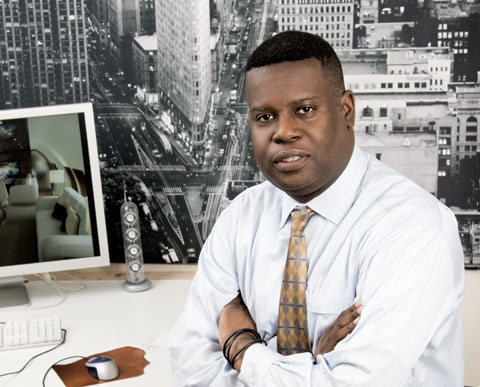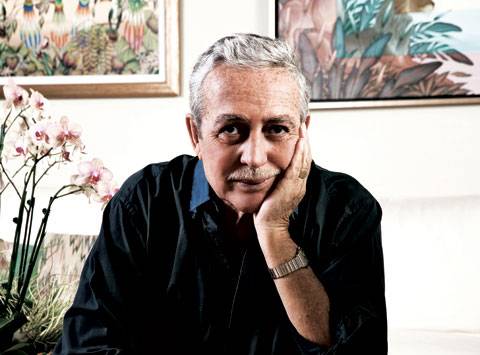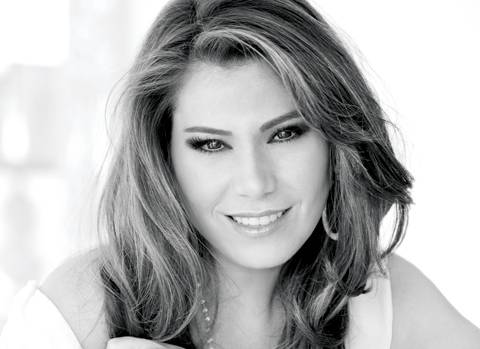By Peggy Romero
“A good interior will have an excellent balance of the elements,” he says. “There are some who have fallen into to this field and have taken on the title of designer, and there are those who have spent years learning the true fundamentals of design.”
Edése Doret’s courageous journey from Port Au Prince, Haiti, to the Bronx was embraced with a mixture of excitement, loss, and great expectations. With no command of the English language, and very little friends or family, the first few years were a struggle, assimilating to American culture while desiring nothing but the best for his young boys Edése Jr. and Gilbert. His vision of pale white coats and stethoscopes extended to the two additional children that followed. Why not? It’s a well-known fact, or long-standing joke, among the Doret children that most Haitian parents want their children to be doctors. Edése, the eldest son, puzzled his father with his elementary predilection in painting and sketching. He won contests and received notoriety in his urban enclave as the best artist in his school. His father joined the crowd, soaking in every bit of his success; his son exceeded his expectation as an artist with a promising future.
Edése’s entrepreneurial skills were revealed in mini contracts with neighborhood kids. They would pay for an original design on the back of their denim jackets during the graffiti craze of the ’80s. His passion did not elude him, and he developed a portfolio that earned him a coveted spot at the High School of Art & Design on 57th Street in New York City, where he majored in Industrial Design. While there, Edése’s father encouraged a carpenter friend to construct his first drafting table (which is still positioned in his studio today), and he also met his wife of 15 years, Angielina.
Upon graduation in 1986, industrial design remained a focus of interest as he attended Pratt Institute in Brooklyn, New York. He gained seminal experience in furniture design, residential and commercial interiors, consumer products, and private aircraft interiors as a Junior Designer for several small and large design firms during his college years.
Graduation from Pratt in 1991 with a BID in Industrial Design sent him on the fast track to work for a New York-based furniture designer, and he worked on exhibits for AT&T and Sony music, as well as interiors for Walt Disney World. A position as a senior designer in a private aircraft interior development firm launched him to establish Edése Doret Industrial Design, Inc. in 1998, offering multidisciplinary design services in product, graphic, interior, and transportation design.
His first aircraft interior project was an Embraer 135, which he completed with flying colors; the only challenge was the tight schedule placed on him by the client. “Beyond this, everything else went smoothly,” explains Edése. “I spent several years at a design firm as a designer, therefore when I established my own agency I had a depth of experience that ensured the project’s success.”
From there, clear skies laid ahead. Over the last decade the firm has developed interiors for a litany of aircraft, including: Falcon 900B, Agusta A109E Power (four aircraft), Airbus A319CJ (two aircraft), A320CJ (two aircraft), A340-600, A380-800, Boeing 727-100, 757-200 ER, Business Jet (five aircraft), BBJ2, 747-SP (two aircraft), 747-400, McDonnell Douglas MD-11ER, and a Lockheed L1011-500. The firm is listed by Boeing as a qualified agency for the BBJ, BBJ2 and BBJ3, and it is now branching out into the boating world with work currently being done on an 86-meter yacht.
Never standing pat on past success, the company is always looking to expand its design vocabulary. Recent projects have seen the application of new materials like decorative lighting, jet mirror, and jet surface from Air Cabin Trading Co., new leather textures from Edelman Leather, carpets from Kalogridis, and wood veneers from Carl F. Booth & Co. His current work on a Boeing 747-8 reflects the owner’s lifestyle in terms of furnishing materials and cabin interior architecture. They are also working on a BBJ2, which embodies the same criteria in terms of cabin layout furnishings and amenities.
Edése describes the difference between good and bad design in terms of the relationship between objects within a given space. “A good interior will have an excellent balance of the elements,” he says. “There are some who have fallen into to this field and have taken on the title of designer, and there are those who have spent years learning the true fundamentals of design.” This supports Edése’s belief that spatial integrity can be kept even within the new larger bodied aircraft.
At this year’s NBAA what he’ll be on the lookout for will all depend on the project that he’s working on during the time of the show; he’s always forward thinking. “I always keep my eyes open for something new that I can add to my palette.” And it’s quite an impressive palette, indeed, for a young boy who defied the odds, holding onto his vision amidst the wayward distractions of his peers, the culture, and the times.





















